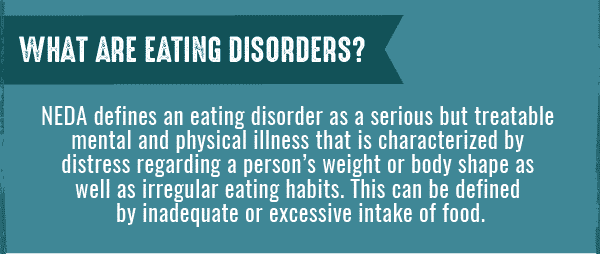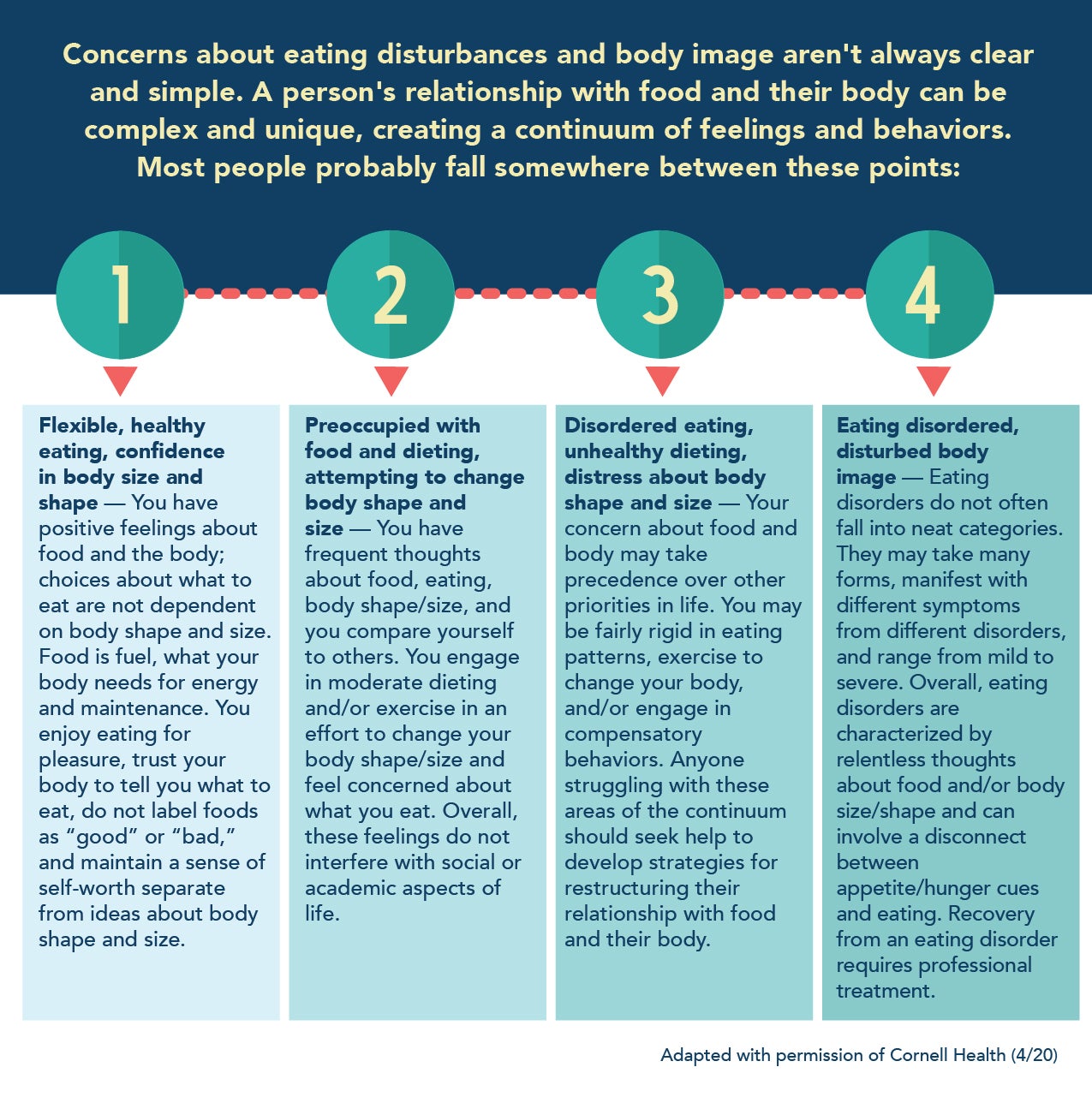Little Known Facts About Eating Disorder Recovery.
Wiki Article
The Buzz on Eating Disorder Recovery
Table of ContentsSome Known Details About Eating Disorder Recovery Some Known Details About Eating Disorder Recovery Eating Disorder Recovery Fundamentals ExplainedUnknown Facts About Eating Disorder RecoveryThe 8-Minute Rule for Eating Disorder Recovery

ARFID is frequently considered an extreme kind of choosy consuming. Some youngsters are finicky eaters as well as can be detected with ARFID since they don't take in enough calories to develop and also grow. Grownups can be diagnosed with ARFID also, and along with not developing literally, they may have difficulty with keeping fundamental physical functions.
Rumination condition is an eating problem that involves on a regular basis regurgitating food. Someone with rumination condition does not show up to do this actively.
Our Eating Disorder Recovery Diaries
Individuals that are detected with rumination eating condition are often instructed to replace the regurgitation with deep breathing techniques. Orthorexia is a reasonably brand-new term that has actually not yet been extensively approved. Orthorexia nervosa is not yet an identified consuming problem medical diagnosis. This does not imply that orthorexia is not harmful.Orthorexia is specified as a fixation with consuming healthy food as well as preventing harmful food. An individual with orthorexia is most likely to experience some disabilities in their life due to their obsession with healthy and balanced eating.
Like orthorexia, diabulimia is not yet an officially recognized eating disorder. Diabulimia is a major and possibly life-threatening problem. Recognizing exactly what diabulimia is can aid identify people that are having problem with this problem and may additionally be at danger of creating other consuming problems. Diabulimia refers to the calculated control of insulin degrees by an individual with type 1 diabetic issues to cause extreme fat burning.
Eating Disorder Recovery for Beginners
, was previously recognized as Consuming Disorder Not Otherwise Specified (EDNOS). An OSFED eating disorder may not fulfill the diagnostic standards for various other eating conditions but is however severe as well as possibly serious.An individual with an OSFED is equally as likely to have major clinical effects as people who completely fit an eating disorder medical diagnosis. Someone that has an OSFED may be simply as likely to pass away as a result of disordered consuming as any individual else with an eating disorder. Eating problems may be triggered by co-occurring mental wellness conditions and also can trigger physical problems that can be lethal.
Identifying the early warning indicators of eating problems can make a significant difference in the long-term health results created by the condition. Signs and also symptoms of eating problems can be normally separated into two sub-categories: behavior (and psychological) indicators and physical indications. Usual psychological and behavioral indications of an eating problem may not always be quickly recognizable.
Some Known Details About Eating Disorder Recovery

In situations where common behavioral and emotional symptoms are unable to be observed, a physician hop over to here may identify an eating disorder solely based on physical indications (eating disorder recovery). Some usual physical signs of an eating problem consist of: Noticeable fluctuations in weight (both gains as well as losses)Tummy pains, Irregular bowel movements, Acid reflux, Menstruation irregularities, consisting of loss of durations or missed out on periods, Difficulty focusing or receiving interest, Lightheadedness or fainting, especially after standing, Resting problems, Cuts and calluses on fingers, Oral issues like enamel erosion, dental caries as well as tooth sensitivity, Dry skin, hair and also nails Like various other mental health conditions, eating problems are triggered by a combination of ecological, hereditary and social variables.
A dysfunctional try here hormone response to stress and anxiety may recommend a vulnerability to creating an eating condition. Social scenarios related to sporting activities, modeling or other line of work concentrating on body photo and weight control can influence the advancement of consuming conditions. The National Partnership on Mental Disorder records that read individuals are much more most likely to develop an eating condition if among their immediate member of the family has one.
All About Eating Disorder Recovery
Indication differ from one person to another, however some variables are likely to influence a person's risk of establishing an eating problem (eating disorder recovery). Some biological threat aspects that are applicable to individuals with anorexia, bulimia nervosa or binge eating disorder consist of: Having a family participant with an eating problem, Having a member of the family with one more mental health disorder Perfectionism, Body photo frustration, Background of an anxiousness conditionRigid thinking Weight preconception, Background of weight loss, Being teased or bullied, Limited social networks, Background of injury As with other psychological health and wellness disorders, consuming problems as well as addictions regularly co-occur.Furthermore, as much as 35 percent of individuals with compound use disorders additionally had an eating condition. The most usual drug abuse by people with an eating disorder consist of: Alcohol, Laxatives, Emetics, Diuretics, Amphetamines, Heroin, copyright Most of these materials are understood for their appetite-suppressing negative effects. Twin diagnosis of eating problems and drug abuse needs comprehensive therapy for both conditions.
Report this wiki page